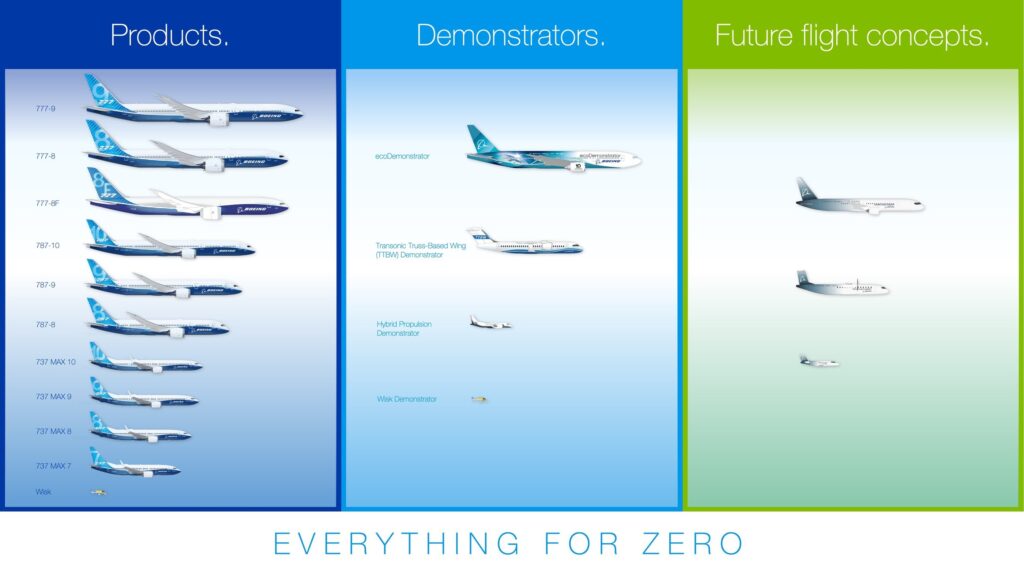
As the aviation industry looks for new ways to reduce it’s carbon footprint, Boeing has unveiled a data modelling tool to show the best ways to get there by 2050. The model includes consultation with leading universities and will continue to be used with key stakeholders. The company also shared illustrative hydrogen and electric concepts that could power the future of flight.
Boeing Chief Sustainability Officer Chris Raymond at the Farnborough International Airshow said: “There are multiple ways to a future where aviation has zero climate impact. We created Cascade on a foundation of credible data and analytical models to allow users to explore various pathways to net-zero. We think this model will help our industry visualize, for the first time, the real climate impact of each solution, from beginning to end, and to inform the most probable and effective strategies.”
Cascade was created with the support of leading universities and helps forward Boeing’s agenda of decarbonisation and emissions reduction through the following methods:
- Airplane fleet renewal
- Renewable energy sources such as sustainable fuel, hydrogen, electric propulsion
- Operational efficiency improvements
- Advanced technologies
This model assesses the full life cycle of renewable energy as it takes into account the emissions from the production and distribution of alternative fuels such as hydrogen, electricity and Sustainable Aviation Fuel.
With the current threat of increasing greenhouse gases and environmental concerns, emissions reduction is a major concern for the aviation industry as a whole.
As part of the ‘SAF and’ approach, Boeing continues to advance the safety and viability of other renewable energy sources and their use on aircraft. Since the mid-2000’s, Boeing has conducted six hydrogen technology demonstrations with crewed and uncrewed aircraft using hydrogen fuel cells and combustion engines. Last year, Boeing successfully tested a cryotank designed for space with the capacity to hold 16,000 gallons of liquid hydrogen or the energy equivalent of the Jet A fuel in a typical regional jet.
Boeing is also working on electric aircraft through it’s joint venture known as Wisk which works to bringing the first all electric, autonomous air taxi to the United States. The eVTOL prototype is on display at the Farnborough Air Show 2022.

The Wisk fits in the Boeing Future of Flight concepts model for a more sustainable aviation industry and future.
“Our common goal is to enable the societal benefits of air transportation while reaching zero climate impact on our planet. To make that a reality, we believe it is best to learn and share our findings broadly, based on a foundation of data, scientific research and collaboration, as we work together to decarbonize aviation,” said Brian Yutko, Boeing chief engineer and vice president of Sustainability and Future Mobility.




